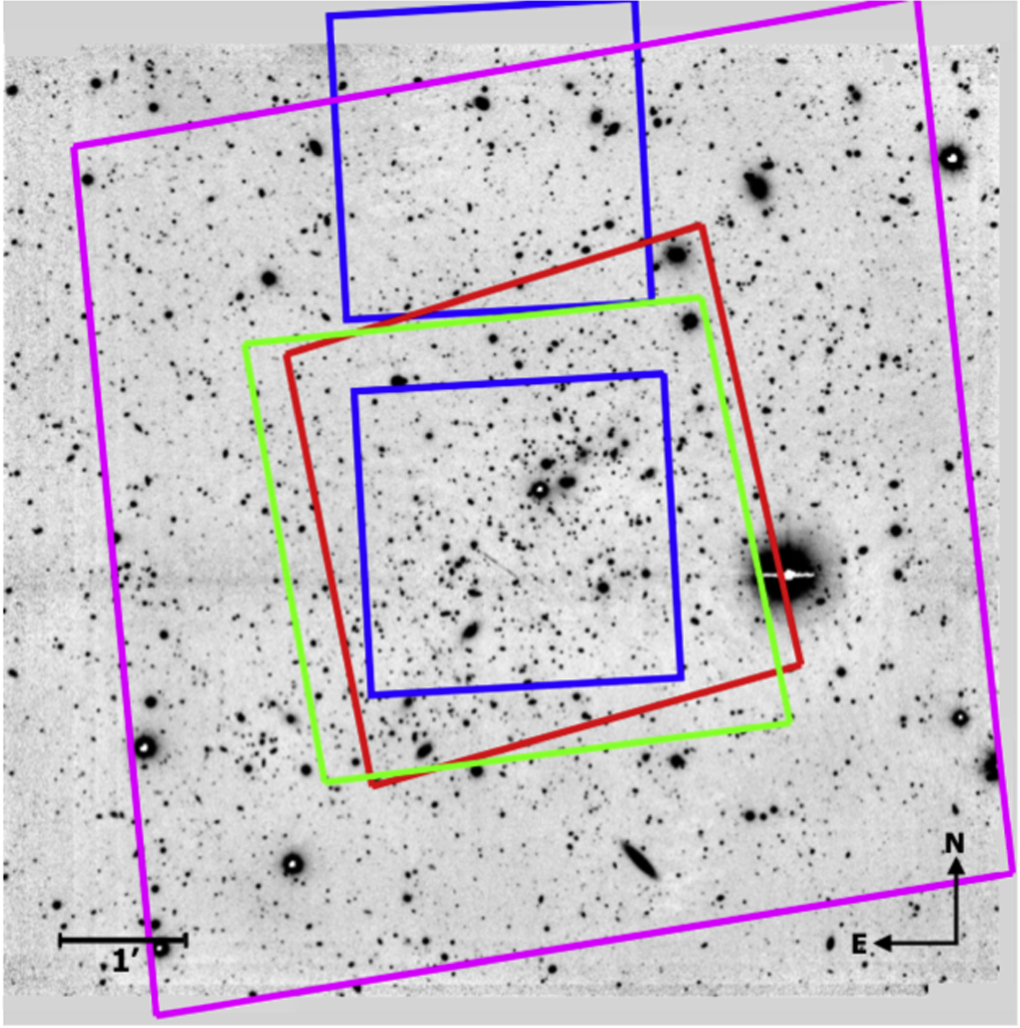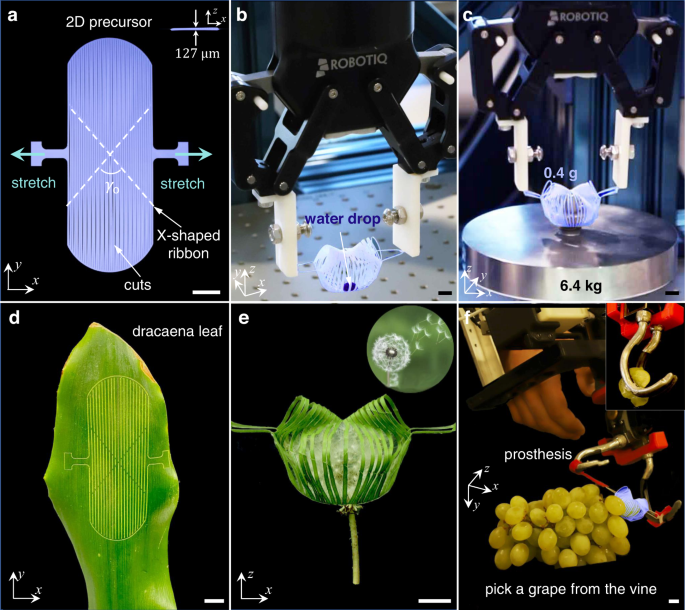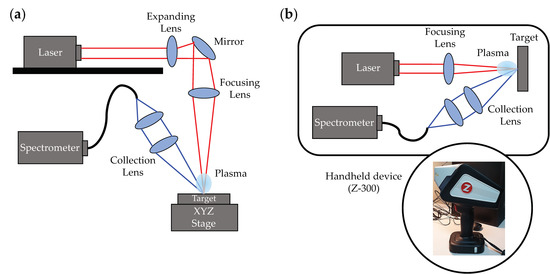2023-08-02 アリゾナ大学
◆エル・ゴルドは宇宙が約62億年前の時点に存在し、これまで考えられていたよりもクラスターが早く成長したことを示唆しています。重力レンズ効果により、遠くの銀河の光が曲げられ、明るくなるため、銀河の詳細な観察が可能になりました。
◆この画像は、クラスター自体だけでなく、それを取り巻く遠い銀河群についても新たな洞察をもたらしています。また、この成果は、宇宙空間のダークマターの分布についても示唆を与えています。
<関連情報>
- https://news.arizona.edu/story/cosmic-lens-reveals-distant-galaxies-and-helps-astronomers-better-understand-dark-matter
- https://iopscience.iop.org/article/10.3847/1538-4357/acd929
- https://arxiv.org/abs/2303.05054v2
- https://www.aanda.org/articles/aa/full_html/2023/04/aa45238-22/aa45238-22.html
- https://arxiv.org/abs/2303.04726v2
JWST PEARLSが捉えたエル・ゴルド銀河団とその拡大構造 The JWST PEARLS View of the El Gordo Galaxy Cluster and of the Structure It Magnifies
Brenda L. Frye, Massimo Pascale, Nicholas Foo, Reagen Leimbach, Nikhil Garuda, Paulina Soto Robles, Jake Summers, Carlos Diaz, Patrick Kamieneski, Lukas J. Furtak, Seth H. Cohen, Jose Diego, Benjamin Beauchesne, Rogier A. Windhorst, S. P. Willner, Anton M. Koekemoer, Adi Zitrin, Gabriel Caminha, Karina I. Caputi, Dan Coe, Christopher J. Conselice, Liang Dai, Hervé Dole, Simon P. Driver, Norman A. Grogin, Kevin Harrington, Rolf A. Jansen, Jean-Paul Kneib, Matt Lehnert, James Lowenthal, Madeline A. Marshall, Felipe Menanteau, Belén Alcalde Pampliega, Nor Pirzkal, Mari Polletta, Johan Richard, Aaron Robotham, Russell E. Ryan Jr., Michael J. Rutkowski, Christóbal Sifón, Scott Tompkins, Daniel Wang, Haojing Yan, and Min S. Yun
The Astrophysical Journal Published 2023 July 19
DOI:10.3847/1538-4357/acd929

Abstract
The massive galaxy cluster El Gordo (z = 0.87) imprints multitudes of gravitationally lensed arcs onto James Webb Space Telescope Near-Infrared Camera (NIRCam) images. Eight bands of NIRCam imaging were obtained in the “Prime Extragalactic Areas for Reionization and Lensing Science” (“PEARLS”) program. Point-spread function–matched photometry across Hubble Space Telescope and NIRCam filters supplies new photometric redshifts. A new light-traces-mass lens model based on 56 image multiplicities identifies the two mass peaks and yields a mass estimate within 500 kpc of (7.0 ± 0.30) × 1014M⊙. A search for substructure in the 140 cluster members with spectroscopic redshifts confirms the two main mass components. The southeastern mass peak that contains the brightest cluster galaxy is more tightly bound than the northwestern one. The virial mass within 1.7 Mpc is (5.1 ± 0.60)×1014M⊙, lower than the lensing mass. A significant transverse velocity component could mean the virial mass is underestimated. We contribute one new member to the previously known z = 4.32 galaxy group. Intrinsic (delensed) positions of the five secure group members span a physical extent of ∼60 kpc. 13 additional candidates selected by spectroscopic/photometric constraints are small and faint, with a mean intrinsic luminosity ∼2.2 mag fainter than L*. NIRCam imaging admits a fairly wide range of brightnesses and morphologies for the group members, suggesting a more diverse galaxy population in this galaxy overdensity.
JWST/NIRCamが捉えたz=2.3の塵星形成銀河El Anzueloの色勾配は、中心部の塵の減衰によるものか、それとも銀河の内側からの成長によるものか? Are JWST/NIRCam color gradients in the lensed z=2.3 dusty star-forming galaxy El Anzuelo due to central dust attenuation or inside-out galaxy growth?
Patrick S. Kamieneski, Brenda L. Frye, Massimo Pascale, Seth H. Cohen, Rogier A. Windhorst, Rolf A. Jansen, Min S. Yun, Cheng Cheng, Jake S. Summers, Timothy Carleton, Kevin C. Harrington, Jose M. Diego, Haojing Yan, Anton M. Koekemoer, Christopher N. A. Willmer, Andreea Petric, Lukas J. Furtak, Nicholas Foo, Christopher J. Conselice, Dan Coe, Simon P. Driver, Norman A. Grogin, Madeline A. Marshall, Nor Pirzkal, Aaron S. G. Robotham, Russell E. Ryan Jr., Scott Tompkins
arXiv Submitted on: 9 Mar 2023
DOI:https://doi.org/10.48550/arXiv.2303.05054
Gradients in the mass-to-light ratio of distant galaxies impede our ability to characterize their size and compactness. The long-wavelength filters of JWST’s NIRCam offer a significant step forward. For galaxies at Cosmic Noon (z∼2), this regime corresponds to the rest-frame near-infrared, which is less biased towards young stars and captures emission from the bulk of a galaxy’s stellar population. We present an initial analysis of an extraordinary lensed dusty star-forming galaxy (DSFG) at z=2.3 behind the El Gordo cluster (z=0.87), named El Anzuelo (“The Fishhook”) after its partial Einstein-ring morphology. The FUV-NIR SED suggests an intrinsic star formation rate of 81+7−2 M⊙ yr−1 and dust attenuation AV≈1.6, in line with other DSFGs on the star-forming main sequence. We develop a parametric lens model to reconstruct the source-plane structure of dust imaged by the Atacama Large Millimeter/submillimeter Array, far-UV to optical light from Hubble, and near-IR imaging with 8 filters of JWST/NIRCam, as part of the Prime Extragalactic Areas for Reionization and Lensing Science (PEARLS) program. The source-plane half-light radius is remarkably consistent from ∼1−4.5 μm, despite a clear color gradient where the inferred galaxy center is redder than the outskirts. We interpret this to be the result of both a radially-decreasing gradient in attenuation and substantial spatial offsets between UV- and IR-emitting components. A spatial decomposition of the SED reveals modestly suppressed star formation in the inner kiloparsec, which suggests that we are witnessing the early stages of inside-out quenching.
JWSTのPEARLS: JWSTのPEARLS:ACT-CL J0102-4915「エル・ゴルド」の新しいレンズモデルと、JWSTが発見した宇宙論的距離にある最初の赤い超巨星 JWST’s PEARLS: A new lens model for ACT-CL J0102−4915, “El Gordo,” and the first red supergiant star at cosmological distances discovered by JWST
J. M. Diego, A. K. Meena, N. J. Adams, T. Broadhurst, L. Dai, D. Coe, B. Frye, P. Kelly, A. M. Koekemoer, M. Pascale, S. P. Willner, E. Zackrisson, A. Zitrin, R. A. Windhorst, S. H. Cohen, R. A. Jansen, J. Summers, S. Tompkins, C. J. Conselice, S. P. Driver, H. Yan, N. Grogin, M. A. Marshall, N. Pirzkal, A. Robotham, R. E. Ryan Jr., C. N. A. Willmer, L. D. Bradley, G. Caminha, K. Caputi, T. Carleton and P. Kamieneski
Astronomy & Astrophysics Published:23 March 2023
DOI:https://doi.org/10.1051/0004-6361/202245238

Abstract
The first James Webb Space Telescope (JWST) data on the massive colliding cluster El Gordo allow for 23 known families of multiply lensed images to be confirmed and for eight new members of these families to be identified. Based on these families, which have been confirmed spectroscopically by MUSE, we derived an initial lens model. This model guided the identification of 37 additional families of multiply lensed galaxies, among which 28 are entirely new systems, and nine were previously known. The initial lens model determined geometric redshifts for the 37 new systems. The geometric redshifts agree reasonably well with spectroscopic or photometric redshifts when those are available. The geometric redshifts enable two additional models that include all 60 families of multiply lensed galaxies spanning a redshift range 2 < z < 6. The derived dark-matter distribution confirms the double-peak configuration of mass found by earlier work with the southern and northern clumps having similar masses. We confirm that El Gordo is the most massive known cluster at z > 0.8 and has an estimated virial mass close the maximum mass allowed by standard cosmological models. The JWST images also reveal the presence of small-mass perturbers that produce small lensing distortions. The smallest of these is consistent with being a dwarf galaxy at z = 0.87 and has an estimated mass of 3.8 × 109 M⊙, making it the smallest substructure found at z > 0.5. The JWST images also show several candidate caustic-crossing events. One of them is detected at high significance at the expected position of the critical curve and is likely a red supergiant star at z = 2.1878. This would be the first red supergiant found at cosmological distances. The cluster lensing should magnify background objects at z > 6, making more of them visible than in blank fields of a similar size, but there appears to be a deficiency of such objects.
PEARLS: JWSTで観測されたエル・ゴルド星団の低恒星密度銀河 PEARLS: Low Stellar Density Galaxies in the El Gordo Cluster Observed with JWST
Timothy Carleton, Seth H. Cohen, Brenda Frye, Alex Pigarelli, Jiashuo Zhang, Rogier A. Windhorst, Jose M. Diego, Christopher J. Conselice, Cheng Cheng, Simon P. Driver, Nicholas Foo, Rachana A. Bhatawdekar, Patrick Kamieneski, Rolf A. Jansen, Haojing Yan, Jake Summers, Aaron Robotham, Christopher N. A. Willmer, Anton Koekemoer, Scott Tompkins, Dan Coe, Norman Grogin, Madeline A. Marshall, Nor Pirzkal, Russell E. Ryan Jr
arXiv Submitted on: 8 Mar 2023
DOI:https://doi.org/10.48550/arXiv.2303.04726
A full understanding of how unusually large “Ultra Diffuse Galaxies” (UDGs) fit into our conventional understanding of dwarf galaxies remains elusive, despite the large number of objects identified locally. A natural extension of UDG research is the study of similar galaxies at higher redshift to establish how their properties may evolve over time. However, this has been a challenging task given how severely systematic effects and cosmological surface brightness dimming inhibit our ability to study low-surface brightness galaxies at high-z. Here, we present an identification of low stellar surface density galaxies (LDGs), likely the progenitors of local UDGs, at moderate redshift with deep near-IR observations of the El Gordo cluster at z=0.87 with JWST. By stacking 8 NIRCAM filters, we are able to achieve an apparent surface brightness sensitivity of 24.59 mag arcsec−2, faint enough to be complete to the bright end of the LDG population. Our analysis identifies significant differences between this population and local UDGs, such as their color and size distributions, which suggest that UDG progenitors are bluer and more extended at high-z than at z=0. This suggests that multiple mechanisms are responsible for UDG formation and that prolonged transformation of cluster dwarfs is not a primary UDG formation mechanism at high-z. Furthermore, we find a slight overabundance of LDGs in El Gordo, and, in contrast to findings in local clusters, our analysis does not show a deficit of LDGs in the center of El Gordo, implying that tidal destruction of LDGs is significant between z=0.87 and z=0.



